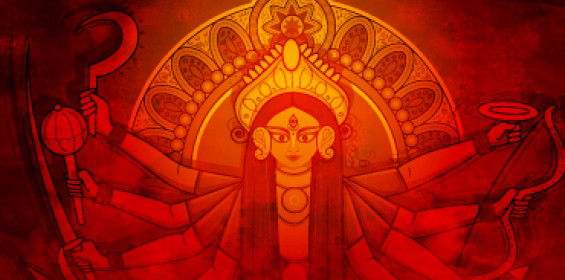Amazing facts about India.
Sir Issac Newton, the English astronomer, mathematician and physicist, is widely hailed as the person who formulated the laws of gravitation and motion. The story goes that he came up with the concept of gravity under an apple tree in Cambridge University. This famed apple tree is preserved and safeguarded in Cambridge University. His book - Philosophiae Naturalis Principia Mathematica - published in 1687 is a famed manuscript on the theory of universal gravitation.

Interestingly, the concept of gravity was understood by ancient Indians 5,000 years ago! The concept was so prevalent and revered that references abound.
For instance, the Rig Veda-1-103-2 explains: “The gravitational effect of Solar System keeps the earth stable.”
Rishi Pippalada in the text, Prashnopanishad states, “The mother divinity in the earth helps the apana by supporting it.”
As per Ayurveda, apana is the force equivalent to gravity, present in the middle of the body. In all living beings, it aids the bodily functions of:
- Ingestion - taking in of food
- Digestion - process of moving and breaking down food into absorbable nutrients
- Excretion - discarding body wastes such as defecation
- Micturition - Urination
- Parturition - Giving birth
And Adi Shankaracharya who lived around 460 BCE, wrote in his commentary on the Upanishads: “If the divinity of the earth would not pull down this body by supporting apana*, this body would have floated anywhere in space.”
The ancient Indian scholar Varahamihira said: “Planet earth being surrounded by various stellar bodies situated in space, is similar to an iron sphere remaining suspended between two magnets.”

Gravity is a concept that can be traced to the Sanskrit words of Gurutva and Gurutvakarshana from ancient Indian history.
The root word Guru denotes heavy, big and influencing and Akarshana, means, “the power of attraction.”
The power to attract, Gurutuva, is present in all the natural bodies.
Indians not only knew of the concept of gravitational pull and had given the word Gurutva to it, as a precursor to the English word “gravity”, but also understood the effect of gravity on earth and its inhabitants.
We know today from modern science that astronauts have difficulty as gravity is very low or nil in space.
Guru & gravity
Indian scriptures lend a lot of importance to the Guru, meaning assertive and influential and is thus a title given to a person full of knowledge, who guides his disciples’ minds and thinking by teaching them.

Thus, the Guru is the one who influences the subtle or sukshama.
Varahamihira further explains Guru as the name for the planet Jupiter, which is the largest and heaviest in the Solar System, exerting maximum influence on all the other bodies in the Solar System.
The concept of gravity can be found in the Guru Gita by sage Vyas where Parvati asks Shiva, “You are the Supreme. But who is it that you bow to?”
To which, Shiva replies, “It is to the all-pervading Guru Tattva that I bow down to”.
The Guru Tattva referred to the force of gravity, the Omnipresent force of the Universe known in Hindu scriptures as Prapancha.
Bharath Gyan, a passionate research initiative, is painstakingly dotting the pieces together, foraging amongst lost remnants to keep the glorious past alive and known. The material has been sourced from @bharathgyan. This research team, led by a passionate husband-wife duo - Dr. DK Hari and Dr. Hema Hari, unearth some of India’s untold stories and make them contemporary. You can click here to buy any of their books on Indian civilization.





























